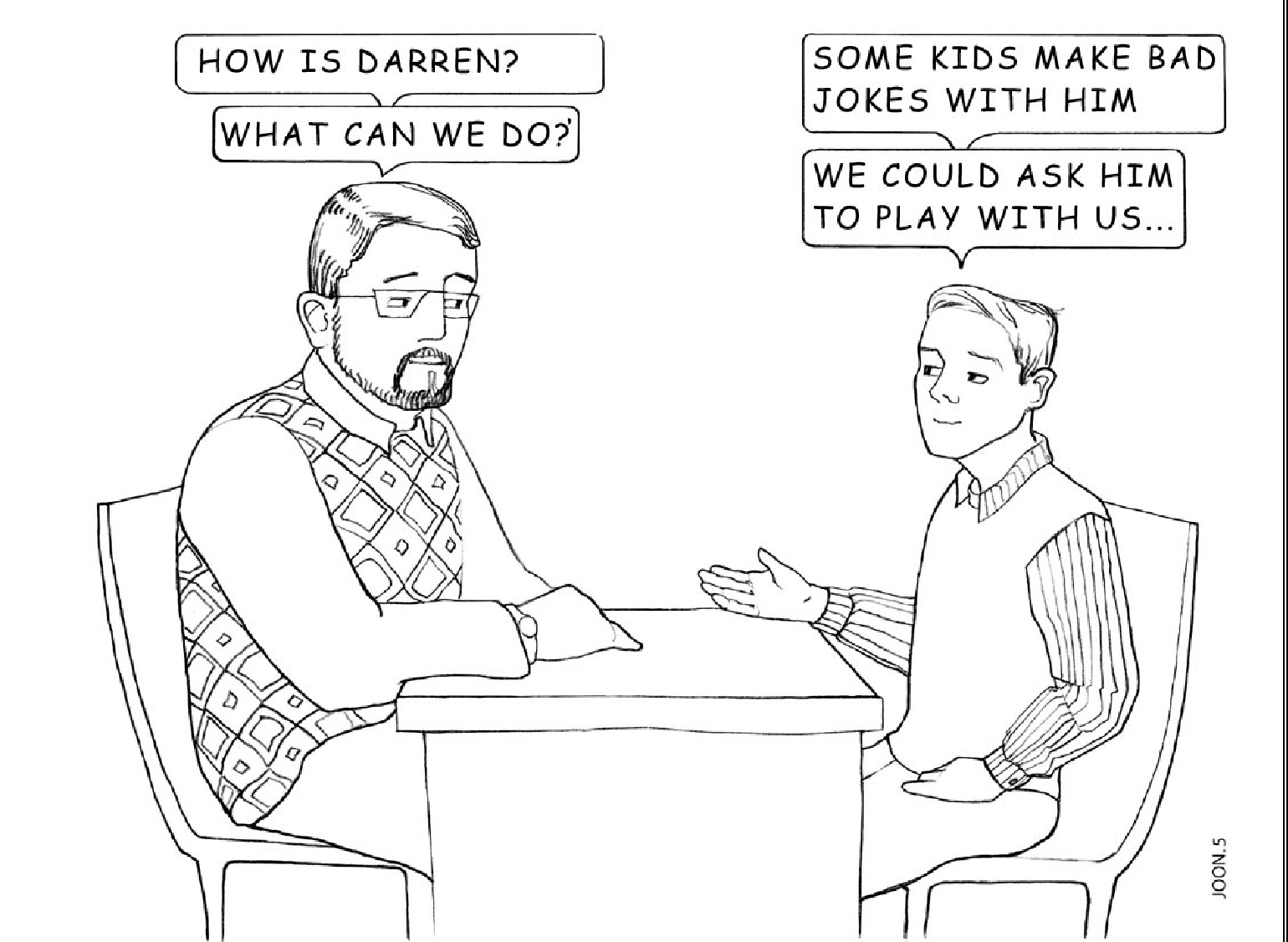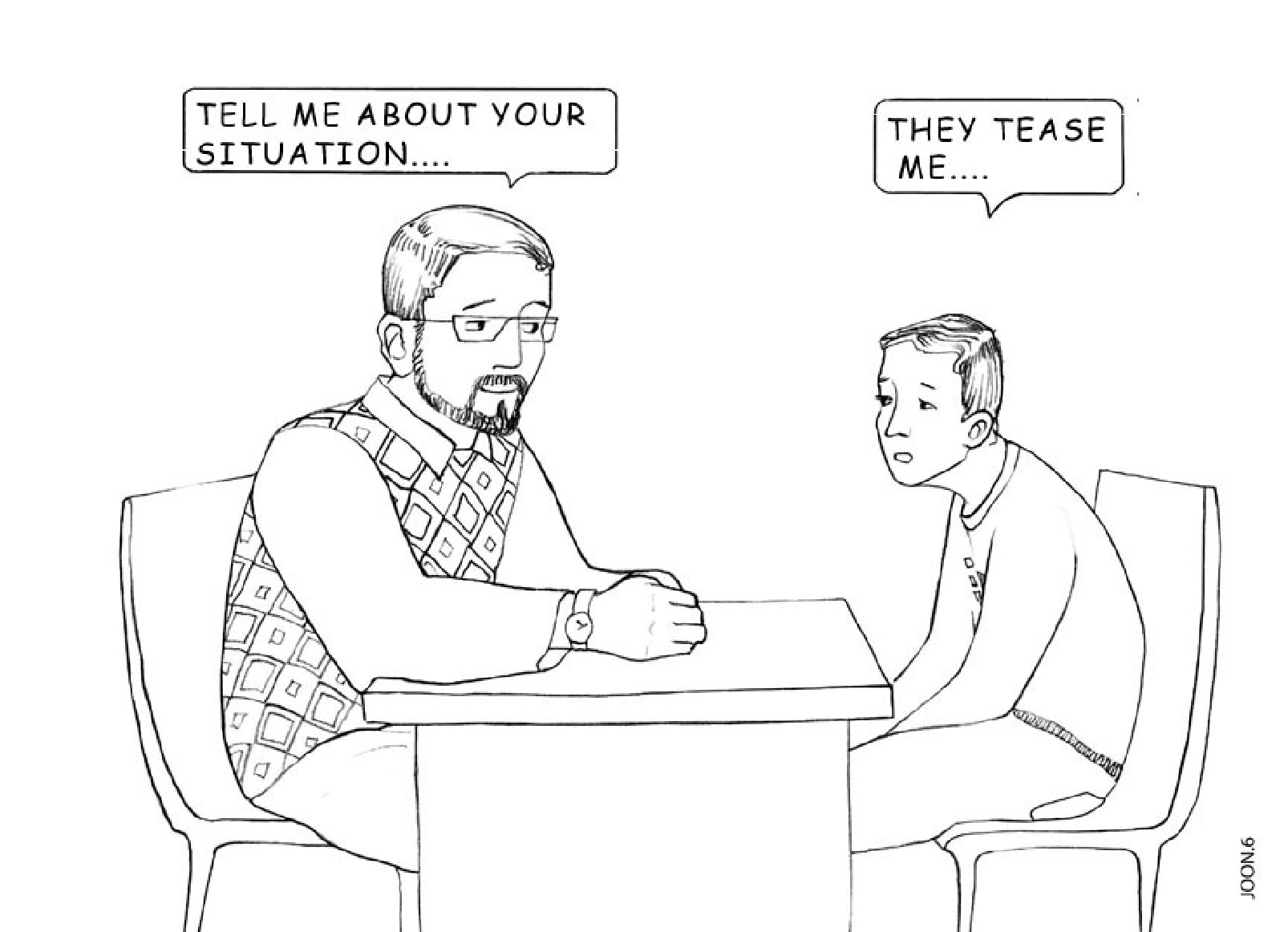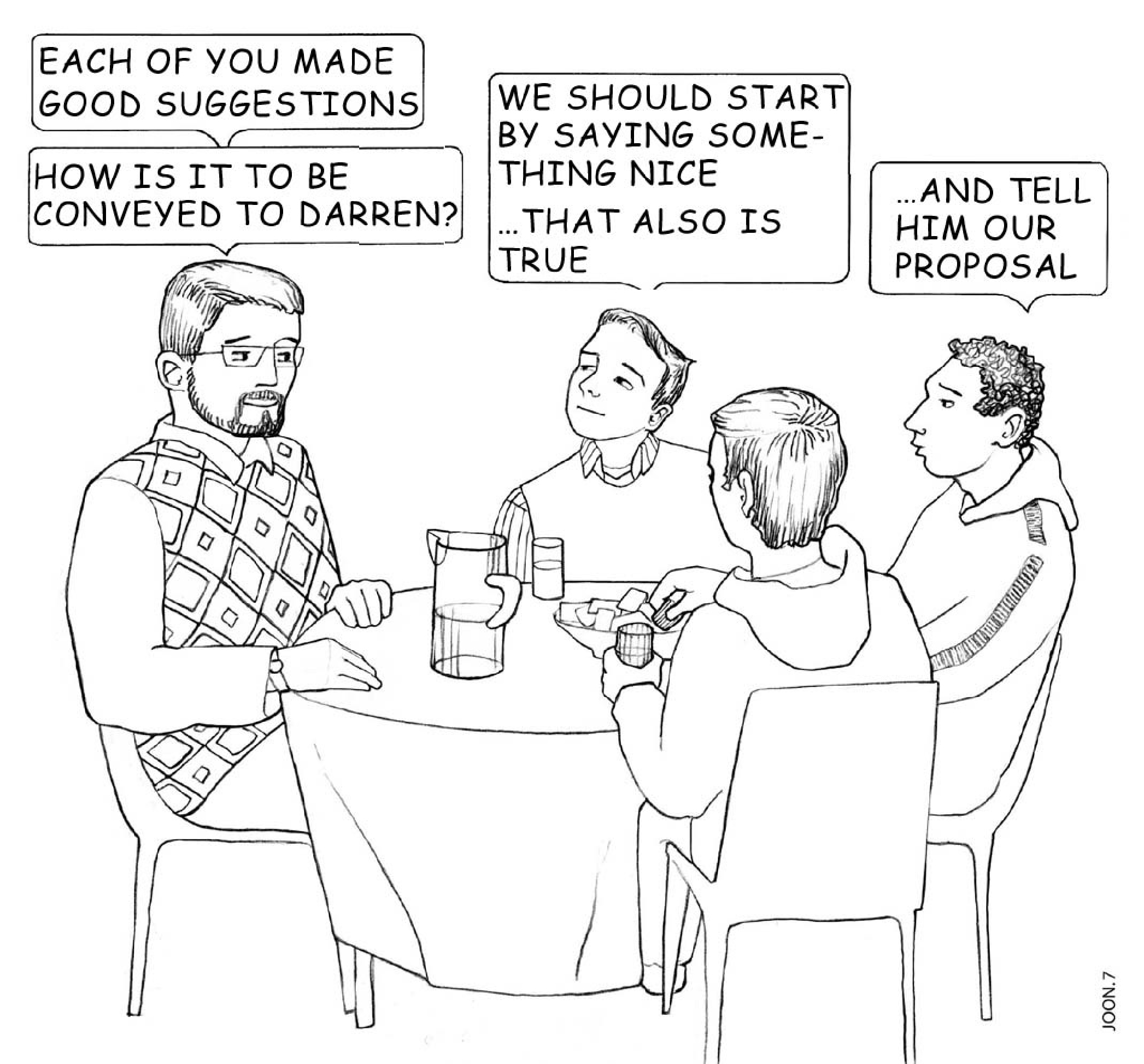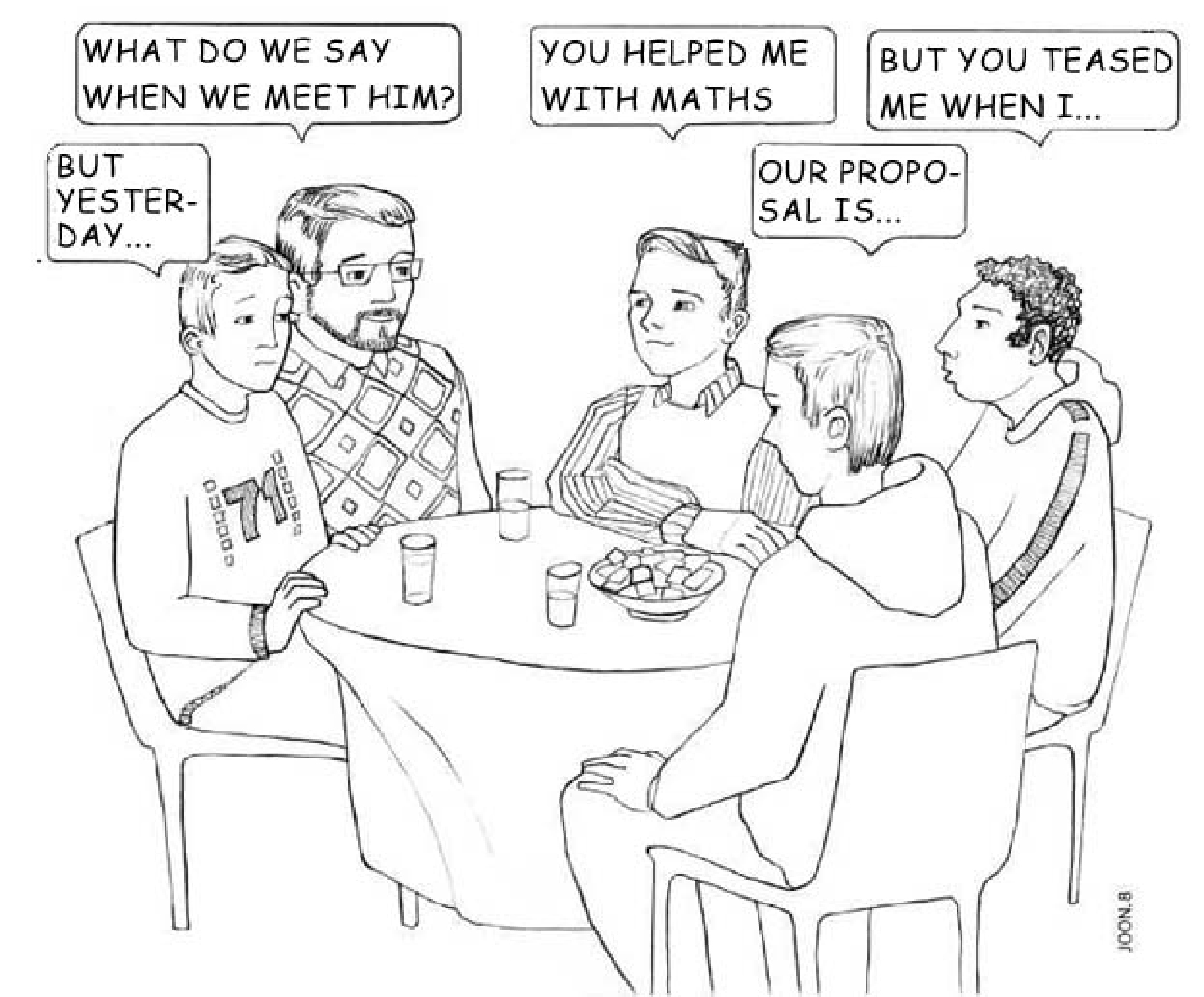Phases in SCm illustrated. Short
version.
Phase I in SCm. Individual talks with the bully suspects.
 |
Phase II in SCm. Individual talks with the probable victim.
 |
Phase III. Group meeting with the bully suspects

The meeting takes place in a cosy atmosphere. You invite them to drinks and snacks and drink and eat yourself too. Non-verbally you present them your role as therapeutic mediator. You confirm good proposals. A positive start to the meeting with the victim is prepared. (“We will start by saying nice things about him or her which are also true”.).
Phase IV. The summit meeting.

Again: cosy atmosphere. You are a friendly host who introduces togetherness by drinking and eating yourself too! The bully suspects begin, as previously agreed, by a positive opening. The therapeutic mediator is prepared for the possibility that a quarrel may start and keeps a flexible balance between being permissive and directive. A mutual agreement is formulated. The meeting is not ended before the bully therapist has got a good answer to the question “What is to be done if a party does not keep the agreement”? The expected answer is: not to put strict demands but be TOLERANT. Small jokes are O.K. But if the other party finds that "You have now gone too far" he or she tells that "It’s enough". If the other does not listen, he or she has to go to NN. (the therapeutic mediator) and tell.
A follow-up Phase V is not illustrated because the alternatives are many, depending on the bully therapist’s assessing of the situation. (All of the Phases I-IV can be repeated or only Phase IV.)